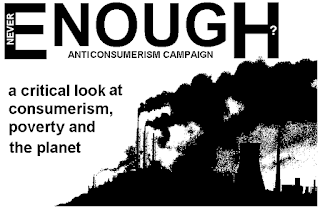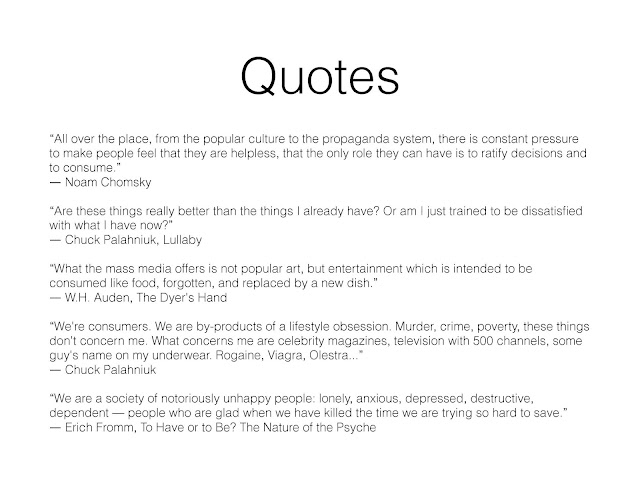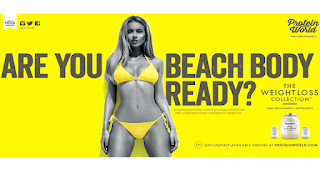Contextual Research:
The Minimalists:
The Minimalists are two American filmmakers, and public speakers Joshua Fields Millburn and Ryan Nicodemus. The duo began pursuing the minimalist lifestyle in 2010. After experiencing significant improvements in their quality of life as a result of adopting and practicing the tenets of minimalism, the pair launched a website in December 2010 to share their experiences. In late 2012 the pair moved from their hometown of Dayton, Ohio, to a cabin in Philipsburg, Montana, to focus on their writing. After four months in Philipsburg, they moved to Missoula, Montana, where they still live and work today. I came across this documentary in my research for my Studio briefs one and two, so this was the main inspiration behind my idea to create an advertising campaign for minimalism. Because the ideas and beliefs were so strong, yet it lacked quality of design, which lead me to the idea of creating an advertising campaign for minimalism, combating consumerism.
Objectify- Gary Huwit
Objectify is a feature-length documentary about our relationship with manufactured objects and, by extension, the people who design them. It’s a look at the creativity at work behind everything from toothbrushes to tech gadgets. It’s about the designers who re-examine, re-evaluate and re-invent our manufactured environment on a daily basis. It’s about personal expression, identity, consumerism, and sustainability. I also came across this documentary in my studio briefs one and two, however this documentary was more of a insight into consumerism than a solution. It was fascinating to see the designers and there approaches to the products, and the different philosophies they have. This documentary helped getting more of a design view on consumerism and how design is affecting it, so more like sustainable than minimal.
Enough?
This was an anti-consumerist campaign from the early 90s and although the message is strong just like the minimalists the design and actual advertising campaign is very poor and to me this is where the are falling behind because consumerist products are being advertised, branded and packaged by world leading designers with money being continuously pumped into it. So how is something like this on the right going to capture people attentions with its simple colours and figures when companies like Nike and Coca Cola are having these bright, vibrant, extravagant campaigns. This is why I wanted to create my own campaign to promote minimalism.
Consumerism
Consumerism is a cultural model that promotes the acquisition of goods, specifically the purchase of goods, for personal satisfaction and economic stimulation. Consumerism is often mistaken for capitalism but capitalism is an economic system, while consumerism is a pervasive cultural attitude. A model combining the two is called consumer capitalism, a system in which consumer demand for goods is deliberately increased through manipulation as a means of increasing sales. The model relies on stimulating consumer desire for goods far in excess of satisfying needs. Mechanisms to do so include promotion of luxury items, new technologies and new models of existing technologies. Another method of increasing the sale of goods is Planned obsolescence which is an approach to the conception, design and production of a product, such as hardware or software, involving the intent that it should be useful, functional or popular for only a limited length of time. For many in a consumer culture, a functioning smart-phone is not adequate: If a new phone model is released they feel compelled to purchase it.
Target Audience Research:
Geographical
80% of the population that lives in North America and Western Europe, accounts for 60% of private consumption spending. So from this stat I will try to focus on these areas In particular because that is where the highest amounts of consumption are taking place. It is hard to grasp a particular age range when it comes to consumerism, however I have chosen to focus on teens and young professional because these seem to be the most easily targeted and manipulated through marketing.
Demographic
In terms of demographic from my Minimalism awareness campaign, I will focus on North America and Western Europe as these have the largest consumption rates by far and take up more than half of all consumption spending in the world. Reaching out to these in particular will have he biggest impact because if they began to live minimal lifestyles the change would be greatest because as their consumption rates go down and they just have what they need it enables the poorer countries to have the necessities, and things become more equal.
Links between mental health and consumerism:
Consumerism may be a major reason why psychological problems among American teens have been on the rise since the 1930s, a new study finds.
"We have become a culture that focuses more on material things and less on relationships," and this emphasis on things is affecting mental health on a societal level, said lead researcher Jean Twenge, an associate professor of psychology at San Diego State University, ABC News reported.
Twenge and colleagues analysed data collected between 1938 and 2007 on the mental health and personality of more than 63,000 high school and college students.
The researchers found that students today feel much more isolated, misunderstood and emotionally sensitive or unstable than in previous decades, ABC News reported. In addition. Teens today are more likely to be narcissistic, have poor self-control and to say they're worried, sad, and dissatisfied with life.
Identifying and Analysing Relevant Visual Examples
The first advertisement is from protein world and can be seen as both successful and unsuccessful, as It got a lot of media attention but for the wrong reasons, however it still got a lot of attention nonetheless. The ad shows a very unrealistic example of a woman body and the poses the question “Are you beach body ready’. This is very wrong for many reasons that being showing an unrealistic goal for women and the asking the question very bluntly ”are you ready” and implying that their product can deliver these types of results which is not the case. It is also sexist because its only aimed at women and there body expectations, and its playing on the insecurities of women to try and sell their product. In terms of the actual design of the advert it uses very strong vibrant colours which go along with the bold, blunt nature of the advert and I believe the advert did its job which was to cause controversy and bring the brand into the public eye.
The next advertisment is a colossal consumerist campaign by Nike which was called ‘Just Do It’ which was taken from murder Gary Gilmores last words which were ‘Lets do it’, which for me alread says a lot. Nike is such a powerful brand but this is most from their consumerist techniques such as using relevant pop culture such as hip pop artists and footballers to wear their products and pay them to, which then leads to people wanting and even fighting for these products. The words Just Do It are very blunt and demanding and are doing a very good job of manipulating people into buying their products.
The Final advertisment is a very different one and more towards the sought of thing I want to create myself for this project. Becasue it uses all the same techniques as the previuos advertisments however for different reasons. It is saying dont buy this jacket and give to charity to try and combabt consumerism and take a pledge to lower your consuption. This is very effective and impactful because it is unexpected that a brand would do this but to me just shows how bad we have became as consumers for something like this to be created. So this gave me a lot of inspiration to create something similar but based around a minimalistic lifestyle to combat consumerism.






















